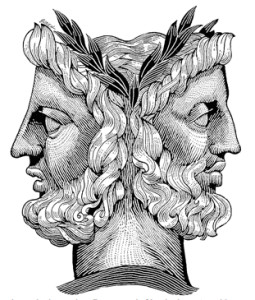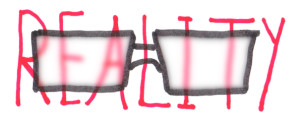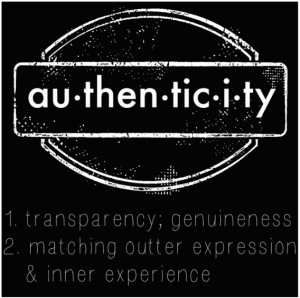There’s been a lot of talk about “authenticity;” we want authentic products, authentic experiences, and authentic leaders. We seek originality; we desire products and services, as well as leaders and organizations that are what they claim to be. Most of the attention has been focused on those variations of authenticity – “inside-out authenticity:” products, services, leaders and organizations that are true to their origins, principles, intentions and claims. They are real; there is no disparity between what they are on the inside and what they are on the outside.
There is another side of authenticity that is equally important for leaders and organizations – what I’ve come to view as “outside-in authenticity.” Authenticity is fundamentally about being “real.” There is the reality of being on the outside what we claim or believe to be on the inside – “inside-out authenticity;” there is also the reality of accurately seeing and attending to what is true on the outside – “outside-in authenticity.”
Leaders and organizations have failed for lack of both inside-out and outside-in authenticity. Lack of authenticity regularly ranks high on the list of factors contributing to disengagement from organizations and disillusionment with leaders; that’s about shortages of inside-out authenticity. Radio Shack is only the latest of many organizations that failed for lack of outside-in authenticity; they and their leaders either didn’t see or denied the realities taking shape around them. Reality in all cases was distorted or misinterpreted.
Janus is the two-faced god of Roman antiquity that presided over  beginnings, endings, transitions and passages. Perhaps we would benefit from a comparable guide to preside over inner and outer realities – half to help us accurately see and interpret outside realties, and half to help us be on the outside what we claim or hope to be on the inside. Meanwhile, here are some guidelines for managing both faces of authenticity:
beginnings, endings, transitions and passages. Perhaps we would benefit from a comparable guide to preside over inner and outer realities – half to help us accurately see and interpret outside realties, and half to help us be on the outside what we claim or hope to be on the inside. Meanwhile, here are some guidelines for managing both faces of authenticity:
Outside-in authenticity
- Reality is a team sport. The economist and futurist Robert Theobald’s advice is useful when facilitating strategic planning with clients: “When we view reality through the largest number of lenses, it is unlikely that some new reality will appear without being aware of it at all.” In more cases than we think, reality truly is in the eye of the beholder. It is precisely when we are most sure of what we think we see that we need new eyes and interpretations.
- Seeing is not always believing. In his excellent book Denial, Richard Tedlow relays example after example of personal and organizational disasters stemming from seeing but denying
 reality. When Ford lost market share to General Motors early in the 20th century, Henry Ford Sr. discounted massive market intelligence indicating that consumers were eager for autos other than black in color or without extras. Sigmund Freud was well aware that cigar-smoking correlated highly with oral cancer; nevertheless he smoked several cigars a day until he died prematurely of oral cancer.
reality. When Ford lost market share to General Motors early in the 20th century, Henry Ford Sr. discounted massive market intelligence indicating that consumers were eager for autos other than black in color or without extras. Sigmund Freud was well aware that cigar-smoking correlated highly with oral cancer; nevertheless he smoked several cigars a day until he died prematurely of oral cancer. - Check assumptions. Entire rationales for pursuing one business strategy over others often depend on assumptions that we make – about our markets, competitors or environments; too much is at stake if those are wrong. Relationships, too, can be harmed by inaccurate assumptions; what we say or do next after a perceived slight is largely dependent on our assumptions about others’ motives.
- Cultivate truth-telling and dialog. Others seeing or understanding what we do not is no guarantee that we will benefit from that. We need to be approachable, open to contrary or unpopular opinions and to cultivate truth-telling relationships and cultures. Voicing different assumptions, opinions and rationale in the spirit of true dialog yields what’s likely closest to truth.
- Know ourselves. What we see and how we interpret what we see are products of our unique natures. Self-awareness, others’ feedback and valid personality measures can help us manage and compensate for biases, blind spots and limitations that we all have. For example, as reflected by the Meyers-Briggs I am a naturally very strong intuitive and not as attentive to facts and details; I know that I will have to work harder attending to facts and details than others who have different strengths will need to.
- Do all of this fast! The speed of business is leaving us less and less time to accurately assess changes in our environment and markets. The better and quicker we cultivate self-awareness, truth-telling, engagement and dialog, the more likely and quickly we can accurately read external realities. Trust is an accelerator, and that brings us to “inside-out authenticity.”
Inside-out authenticity
- Be clear about our “3 Ps” – purpose, principles and priorities. It will be as difficult to be perceived as an authentic leader when we are unclear about our 3 Ps as it would be for a ship to reach its destination without a rudder. We need to first be clear ourselves about our 3 Ps, then to clearly communicate them.
- As we’ve heard many times, “Walk the talk.” There is nothing that screams “inauthentic,” for leaders and organizations, as
 much as saying one thing but doing something different; people don’t listen to what we speak as much as they watch our feet. Sometimes the disconnect is unintentional; for example inTEgro’s Organizational Integrity Survey occasionally surfaces unintentional contradictions between stated organization values and hiring, promotion or performance management practices.
much as saying one thing but doing something different; people don’t listen to what we speak as much as they watch our feet. Sometimes the disconnect is unintentional; for example inTEgro’s Organizational Integrity Survey occasionally surfaces unintentional contradictions between stated organization values and hiring, promotion or performance management practices. - Be firm and flexible. We can go too far “standing our ground,” “speaking our peace,” being transparent or sticking with what we know. As “The Authenticity Paradox” (Harvard Business Review, February 2015) points out, we can lose the very trust and confidence that we seek from others by “just being ourselves” or over-disclosing. We can also lose out on growth opportunities by being too consistent and not adapting to new realities.
In our efforts to become or find authentic, or real, leaders and organizations, let’s not neglect either inside-out or outside-in authenticity. A shortage of either will prevent us and our organizations from living up to our promise and potential.
What steps will you take to help yourself or your organization operate more authentically from the “inside-out?”
What steps will you take to help yourself and your organization operate more authentically from the “outside-in?”
“We can ignore reality, but we cannot ignore the consequences of ignoring reality.”
Ayn Rand
“A leader’s first job is to define reality.”
Warren Bennis
“The pursuit of truth is like picking raspberries. You miss a lot if you approach it from only one angle.”
Randal Marlin
“The most exhausting thing you can do is to be inauthentic.”
Anne Morrow Lindbergh
Explore inTEgro’s Great Quotes at http://www.integro-inc.com/resources/great_quotes
(Photo credits: consciousnesslifenews.com, wired.com, kendranicole.net)

Great perspective on authenticity, not often highlighted. The many thinking distortions and cognitive biases immediately come to mind, such as confirmation bias, halo effect, self-serving bias, attentional bias etc. They hamper outside-in authenticity because they allow self-deception, denial, and distortion to dominate. Thanks Al for putting your finger where it hurts most and where we need it most. Warmly, Carolien
Thanks, Carolien. I wish I could say that I’m not susceptible to those distortions and self-deceptions, but alas ‘not the case. It helps, though, to know that we are all susceptible to some degree so we can have compensating mechanisms. Thanks as always for your thoughtful input. Al